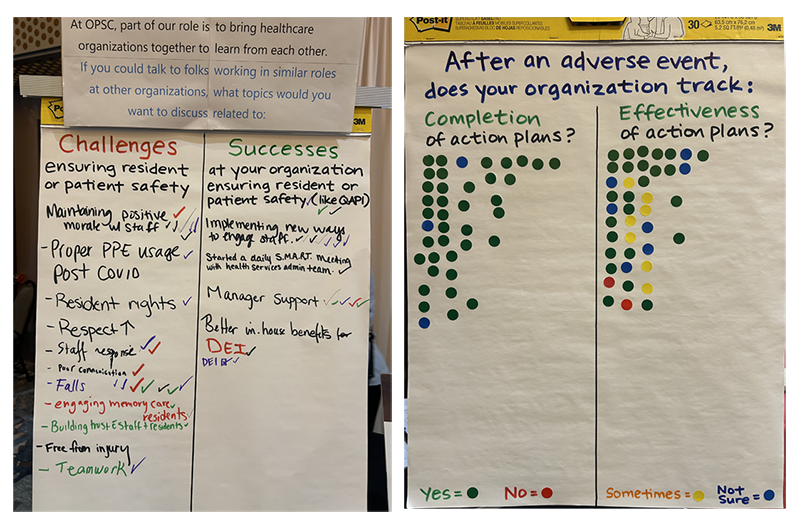OPSC Patient Safety Minute: What’s Top of Mind for Oregon’s Long-Term Care Pros? Insights from the OHCA Spring Expo
We were thrilled to attend the Oregon Health Care Association (OHCA) Spring Expo! It was a wonderful opportunity to connect with folks working in long-term care and hear what was top of mind for attendees when it comes to patient safety.
Here at the Oregon Patient Safety Commission (OPSC), we want to help healthcare organizations learn from each other so we can all make progress together. We asked attendees two questions while at the Expo:
What resident or patient safety challenges and successes they would like to discuss with their peers who work in similar roles
Whether their organizations track the completion and effectiveness of action plans after adverse events
What We Heard: Resident or Patient Safety Challenges and Successes
“Maintaining positive morale with staff” was top of mind for many people, which went hand in hand with successes in “implementing new ways to engage staff.” One director of nursing we talked to explained that engaged staff are best able to make personal connections with residents, and in turn, residents are more likely to turn to those staff when they need assistance.
Attendees we talked with identified falls as a frequent safety challenge. Falls are often in the top three most frequent adverse event types reported to our Patient Safety Reporting Program (PSRP) by nursing facilities, hospitals, and ambulatory surgery centers. Attendees explored this challenge during the breakout session “From Prevention to Intervention: A Comprehensive Guide to Managing Falls.” This session emphasized data collection and documentation to help inform prevention and intervention measures. (Hey! Want to learn more about falls prevention? Check out OPSC’s Long-Term Care Falls Investigation Guide Toolkit!)
We asked attendees what resident or patient safety challenges and successes they would like to discuss with their peers who work in similar roles. We also asked whether their organizations track the completion and effectiveness of action plans after an adverse event.
Most people (93%) said that their organizations track completion of action plans, but fewer than two-thirds (61%) said their organizations track effectiveness of action plans.
What We Heard: Tracking Action Plans
We also asked people if, after an adverse event, their organizations tracked both the completion and effectiveness of their action plans designed to prevent these events. Most people (93%) said their organizations track completion of action plans, but fewer than two-thirds (61%) said their organizations track effectiveness of action plans. This sentiment and opportunity for growth was echoed in the breakout session “Putting QAPI Into Action: Strategies for Successful Quality Improvement Programs,” which highlighted the use of performance metrics to drive continuous progress in healthcare settings.
We gathered valuable insights and made some great connections at the Expo, and we look forward to using this information to help better support long-term care facilities.
Resources
Learn about our Patient Safety Reporting Program and see if your nursing facility is participating. To learn more, contact us: psrp@oregonpatientsafety.org.
Dive deeper into the Oregon Department of Human Services Quality Measurement Program Report for Oregon Community-Based Care Facilities, which includes questions to consider on key data points, like staff retention and falls, that are relevant for all long-term care facilities.


